Apollo 17 Mission
Apollo 17 launched on 7 December 1972. Captain Eugene A. Cernan, USN, served as commander. Commander Ronald E. Evans, USN, was command module pilot. Apollo 17 featured the most extensive lunar exploration of the program, with three moonwalks that each lasted more than seven hours. The mission lasted 12 days, 13 hours and 52 minutes. Recovery was by HC-1 helicopters from USS Ticonderoga (CVS-14).
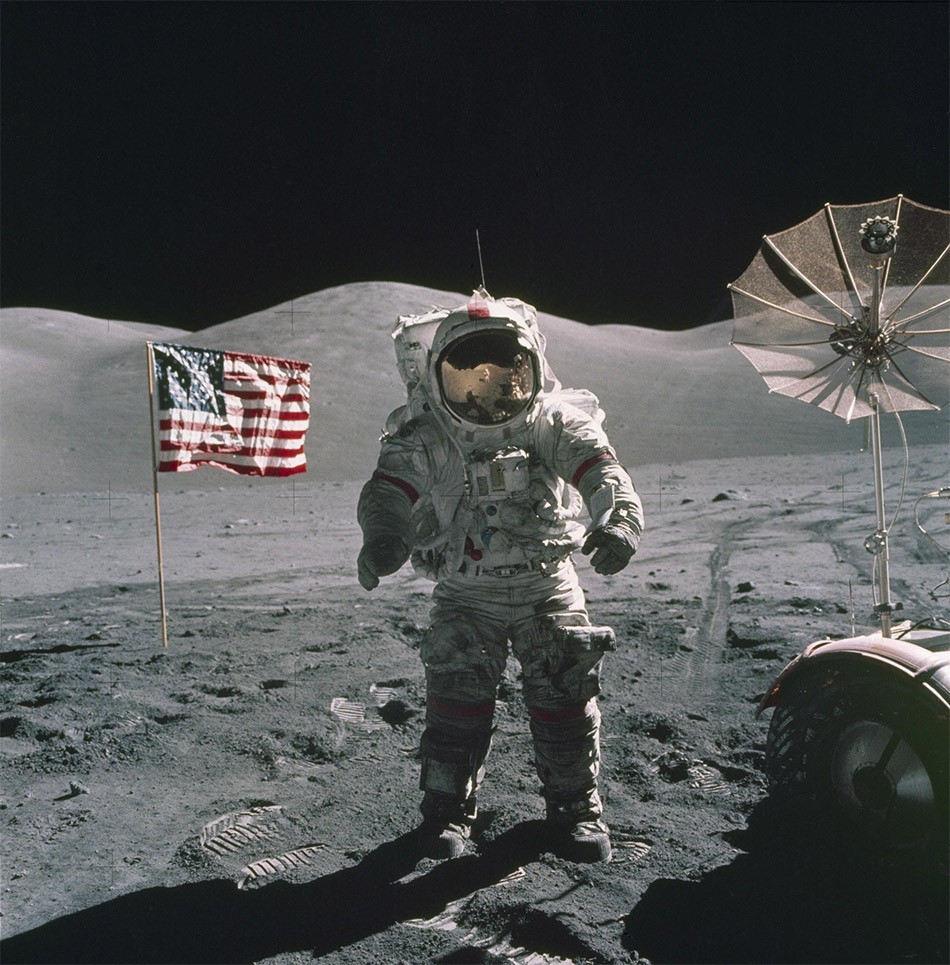
This is an Apollo 17 astronaut standing upon the lunar surface with the United States flag in the background. (Image Credit: NASA)
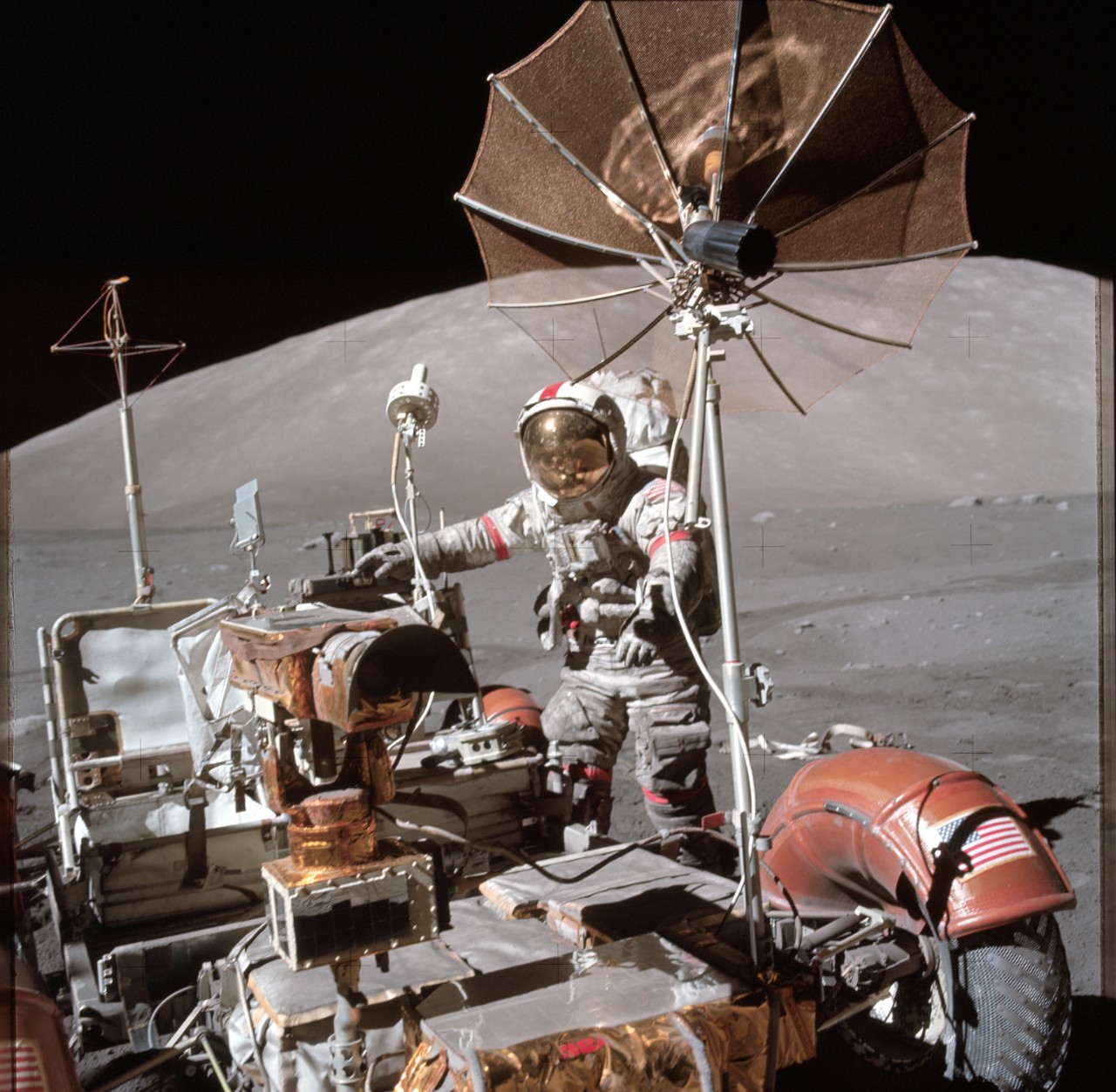
Here, Apollo 17 commander Eugene Cernan approaches the parked Lunar Roving Vehicle. NASA's Marshall Space Flight Center designed, developed, and managed the production of the Lunar Roving Vehicle that astronauts used to explore the moon. (Image Credit: NASA)
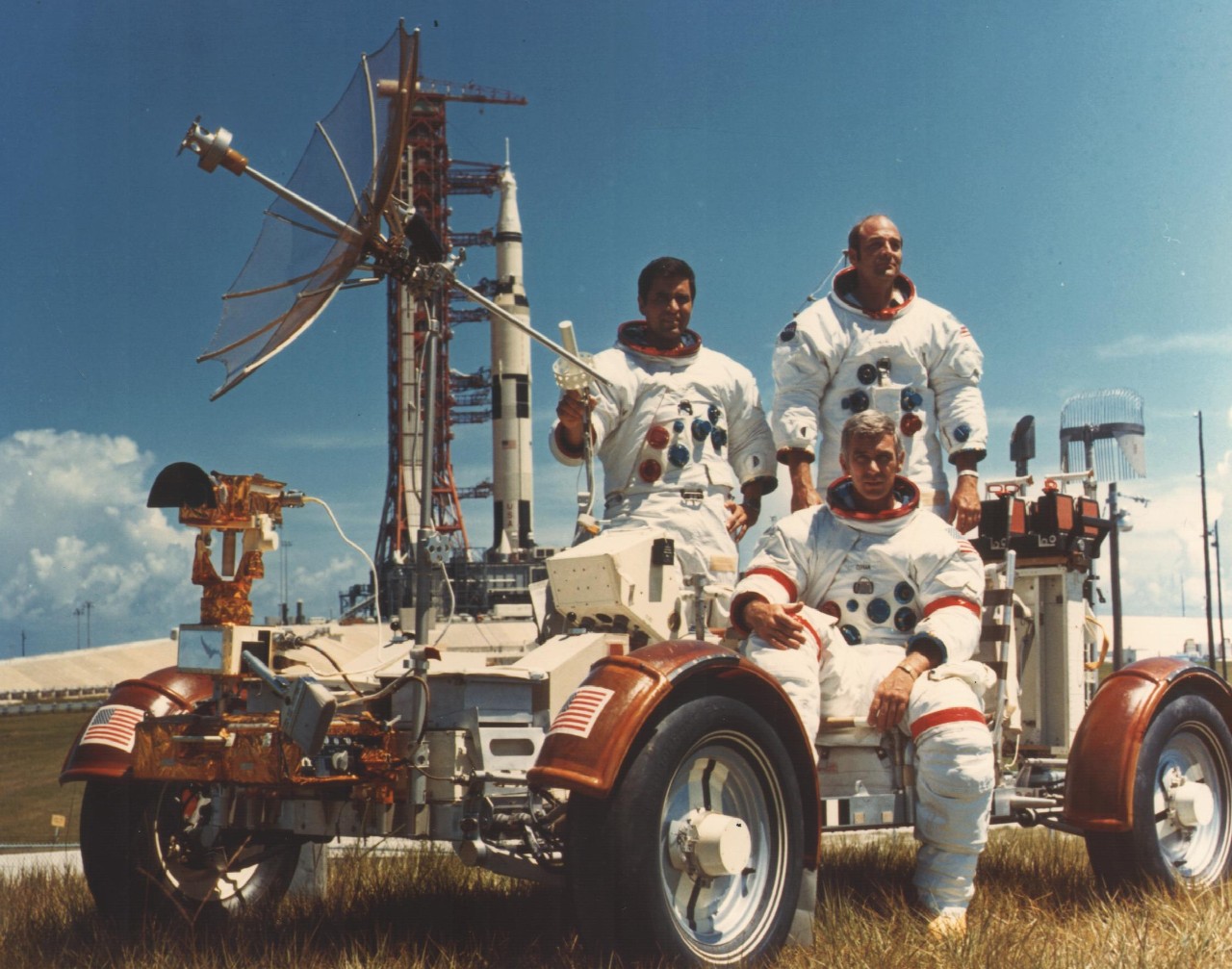
On 19 December 1972, the Apollo 17 crew returned to Earth. Apollo 17 was the sixth and last Apollo mission in which humans walked on the lunar surface. On 11 December, Lunar Module Pilot Harrison H. Schmitt and Commander Eugene A. Cernan landed on the moon's Taurus-Littrow region in the Lunar Module, while Command Module Pilot Ron Evans continued in lunar orbit. During their stay on the moon, the astronauts set up scientific experiments, took photographs, and collected lunar samples.
In this image, Schmitt, Evans, and Cernan are photographed with a Lunar Roving Vehicle (LRV) trainer during the rollout of the Apollo 17 rocket. (Image Credit: NASA)
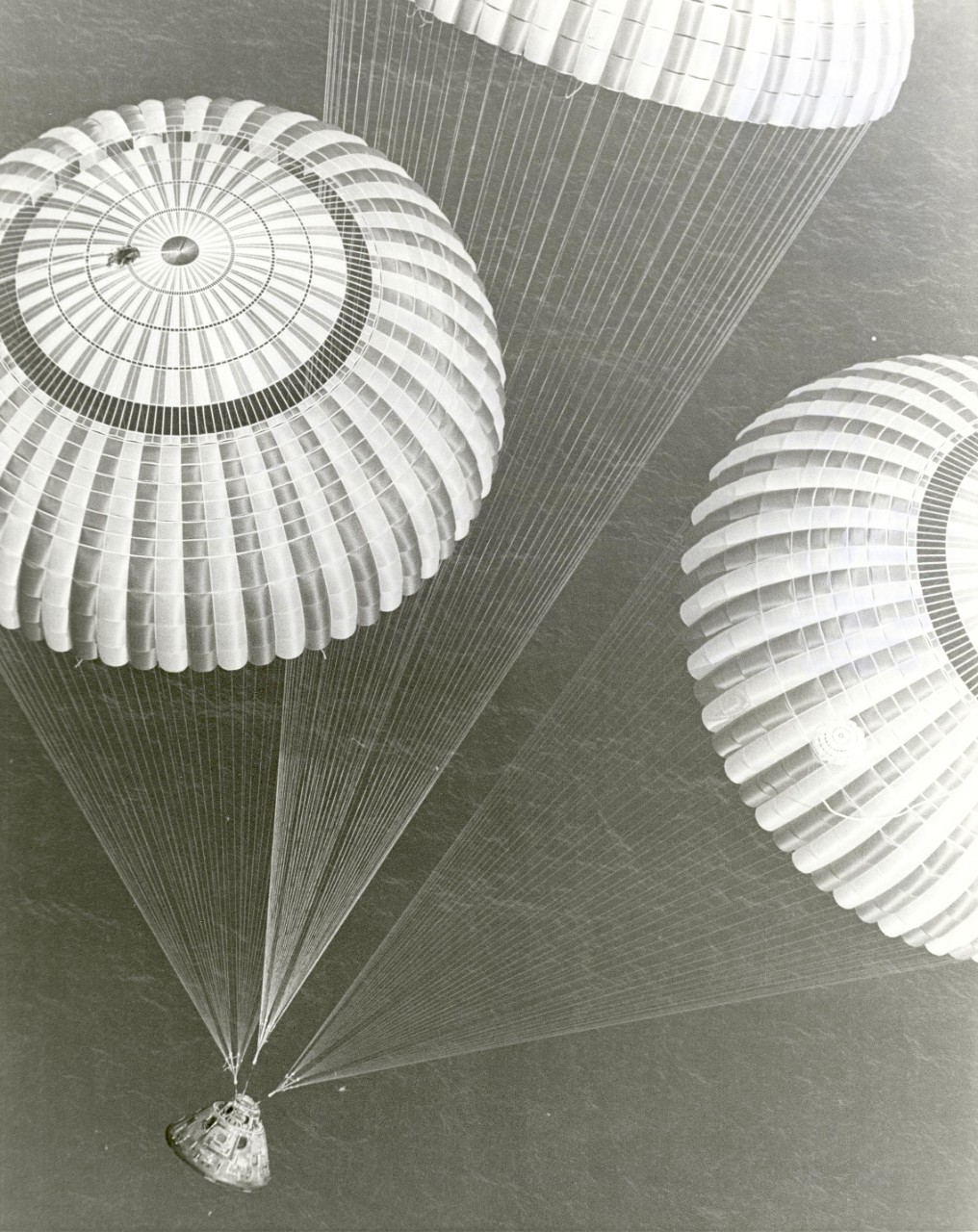
The Apollo 17 spacecraft, containing astronauts Eugene A. Cernan, Ronald E. Evans, and Harrison H. Schmitt, glided to a safe splashdown at 2:25 p.m. EST on 19 December 1972, 648 kilometers (350 nautical miles) southeast of American Samoa.
The astronauts were flown by recovery helicopter to the USS Ticonderoga slightly less than an hour after the completion of NASA's sixth and last manned lunar landing in the Apollo program.
(Image Credit: NASA)
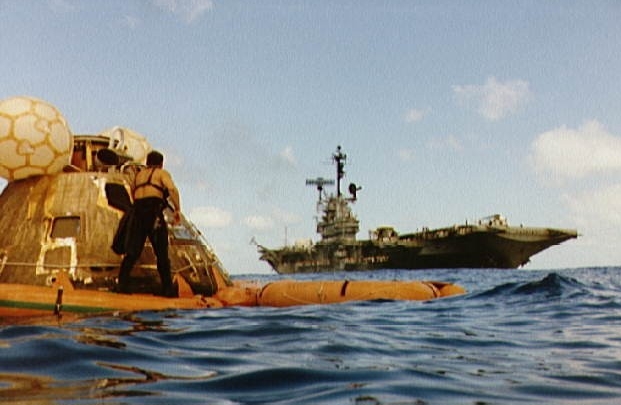
A water-level view of the Apollo 17 command module floating in the Pacific following splashdown and prior to recovery. The prime recovery ship, USS Ticonderoga, is in the background. A U.S. Navy UDT swimmer stands on the flotation collar. Apollo 17 splashdown occured at 1:24:59 p.m., 19 December 1972, about 350 nautical miles southeast of Samoa. (NASA Photo ID: S72-56147)
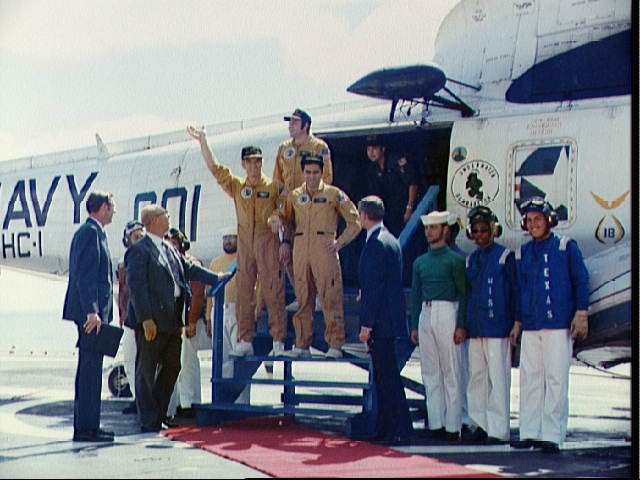
The Apollo 17 crew arrive aboard the prime recovery ship, USS Ticonderoga, to conclude the final lunar landing mission in the Apollo program. They are astronauts Eugene A. Cernan (waving), Harrison H. Schmitt (on Cernan’s left), and Ronald E. Evans (standing in back). VIPs, dignitaries, officials, and Navy personnel give the crew a red carpet welcome. (NASA Photo ID: S72-55937)


